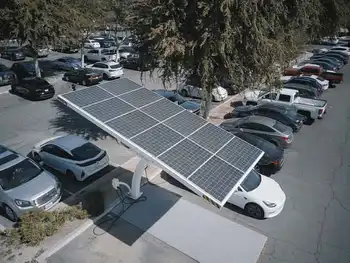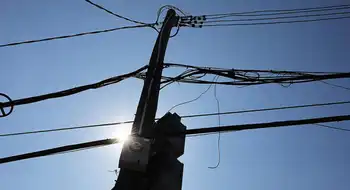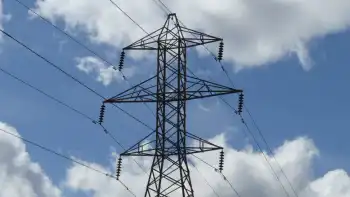Thinking solar power? It's never been cheaper
By Associated Press
CSA Z462 Arc Flash Training - Electrical Safety Essentials
Our customized live online or in‑person group training can be delivered to your staff at your location.

- Live Online
- 6 hours Instructor-led
- Group Training Available
"At these prices, why not?" Lung said.
The government has plowed so much cash into the solar industry that it's effectively pulled the luxury tag off of home solar systems. Combined with local incentives, buyers can save up to 90 percent on a system, whether it's for a single-family home or a 75-unit condo in the city.
Thousands of homeowners are finding they can pay off a rooftop solar system in just a few years and then start pocketing the energy savings.
Lung, the co-op president, stumbled into solar subsidy programs last year as she priced out roof repairs. City, state and federal incentives covered nearly three-quarters of the tab for a $394,514 solar system.
The building flipped the switch on in July and already cut last month's electric bill in half.
"This was just icing on the cake," Lung said. "We had to change the roof anyway."
Solar power has been getting cheaper for years. Panel prices declined 31 percent from 1998 to 2008 because of lower manufacturing and installation costs and state and local subsidies, according to a study released by Lawrence Berkeley National Laboratory. But it still took a ramp up in federal incentives this year to bring the cost within many people's reach.
More than half the states in the U.S. and Washington D.C. offer enough incentives to cut the costs by 40 percent or more, according to Amy Heinemann, a policy analyst at the Database of State Incentives for Renewables and Efficiency.
How much you'll spend depends on where you live.
In New Jersey, generous state incentives can pay for more than 90 percent of a home solar system. A 5-kilowatt solar system would drop from $37,500 to about $2,625 after applying the federal tax credit, a state rebate, and a renewable energy program through the state's largest electric utility, PSE&G.
A system that size can shrink a typical home's electricity consumption by up to 40 percent and cut an electric bill by several hundred dollars a year. The owner would recoup the cost in roughly three years.
Homeowners may never see discounts like these again. Funding in some states dwindled this year as the recession tightened government budgets.
New Jersey reduced its subsidy by half last year, though PSE&G has picked up some of those costs. Massachusetts, Colorado, Maryland, Connecticut, Minnesota and Delaware cut theirs as well.
With labor and electricity rates likely to rebound, people should do the math and determine if now is the best time to buy solar.
In some cases, it may pay to wait.
Solar technology is advancing quickly — like laptops and cell phones a decade ago — and homeowners can expect to see more powerful solar panels in the near future.
And solar components are getting cheaper too. A glut in polysilicon, a key ingredient in panels, should push prices even lower in coming years.
"We're looking anywhere between an 8 to 10 percent price drop a year-long term," said Piper Jaffray analyst Jesse Pichel.
First Solar Inc. hopes to cut manufacturing costs for thin film modules — the cheapest solar option — by a third in the next five years.
Once large and boxy, solar panels are also being designed to blend in better with a rooftop.
Meanwhile, even more government money is on the way.
The Department of Treasury plans to begin issuing $2.3 billion in tax credits next year for companies that make energy equipment, including solar panels. Solar companies also are competing for $11.3 billion more in stimulus money for states. And Congress last year agreed on $2.5 billion more in tax credits for homeowners over the next 10 years.
This could help consumers in states that don't provide subsidies.
Arkansas installer Bob Moore said his customers would pay $35,000 for the system that costs $2,625 in New Jersey. At annual savings of $492.47, it would take more than 71 years for the system to pay off.
But officials in Arkansas and other states say they may use some stimulus money to create new solar incentive programs.
Steven Greenbaum, who manages 41 condominium buildings and cooperatives in New York, said he hopes to get some solar installed soon.
"There are a million concerns people bring up once you put something on a roof," he said. "How are we going to maintain it? Who's going up there? Is it going to be noisy? Where's the wiring going? Am I going to get cancer? It just goes on and on."
His tenants want something durable and efficient, but they'd also hate to lose out on a bounty of government incentives, he said.
"Obviously (solar power) is going to get cheaper as you go, but the longer you wait, the more money you're spending" on your electric bill, he said.











